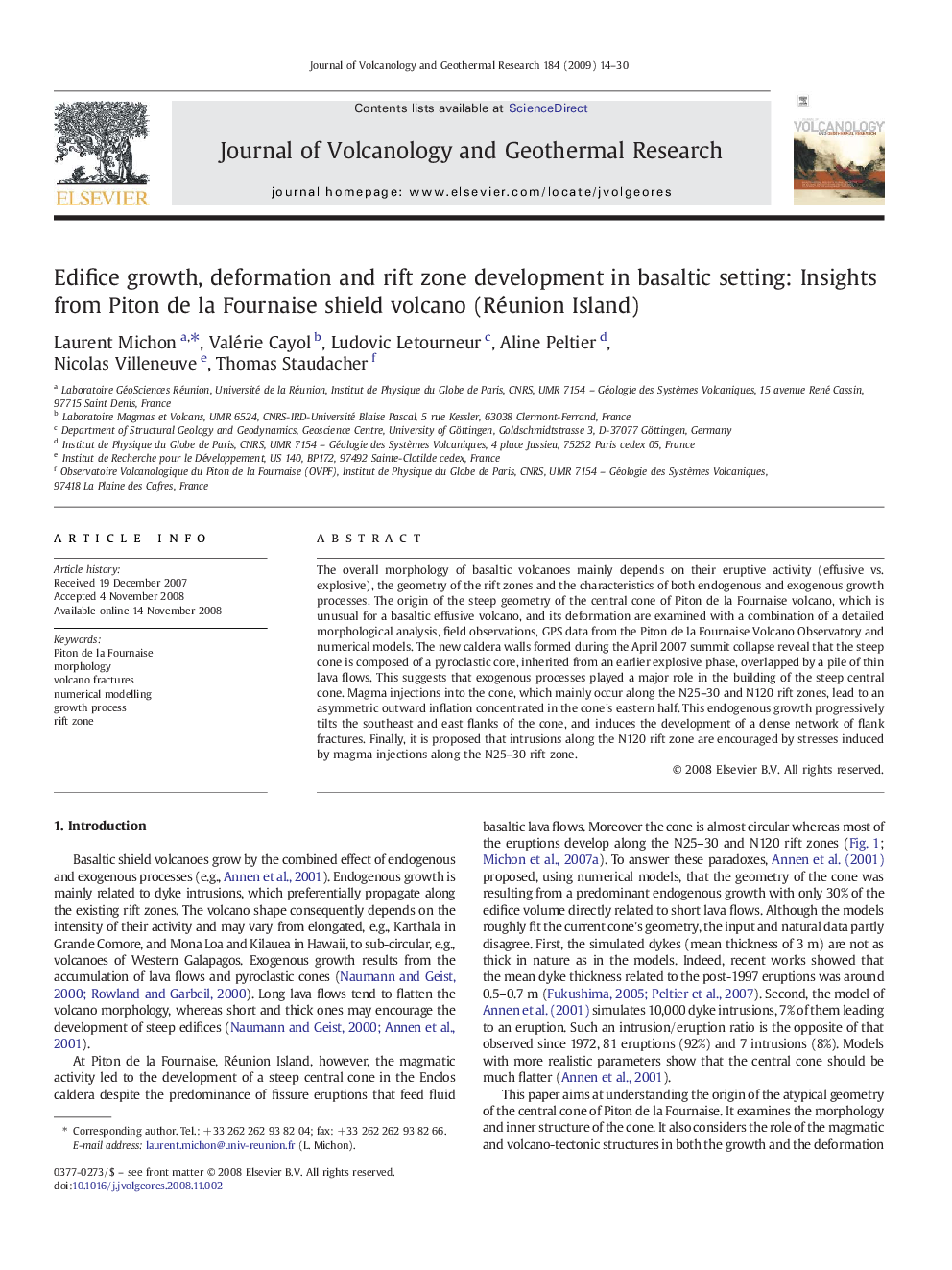| Article ID | Journal | Published Year | Pages | File Type |
|---|---|---|---|---|
| 4713271 | Journal of Volcanology and Geothermal Research | 2009 | 17 Pages |
The overall morphology of basaltic volcanoes mainly depends on their eruptive activity (effusive vs. explosive), the geometry of the rift zones and the characteristics of both endogenous and exogenous growth processes. The origin of the steep geometry of the central cone of Piton de la Fournaise volcano, which is unusual for a basaltic effusive volcano, and its deformation are examined with a combination of a detailed morphological analysis, field observations, GPS data from the Piton de la Fournaise Volcano Observatory and numerical models. The new caldera walls formed during the April 2007 summit collapse reveal that the steep cone is composed of a pyroclastic core, inherited from an earlier explosive phase, overlapped by a pile of thin lava flows. This suggests that exogenous processes played a major role in the building of the steep central cone. Magma injections into the cone, which mainly occur along the N25–30 and N120 rift zones, lead to an asymmetric outward inflation concentrated in the cone's eastern half. This endogenous growth progressively tilts the southeast and east flanks of the cone, and induces the development of a dense network of flank fractures. Finally, it is proposed that intrusions along the N120 rift zone are encouraged by stresses induced by magma injections along the N25–30 rift zone.
